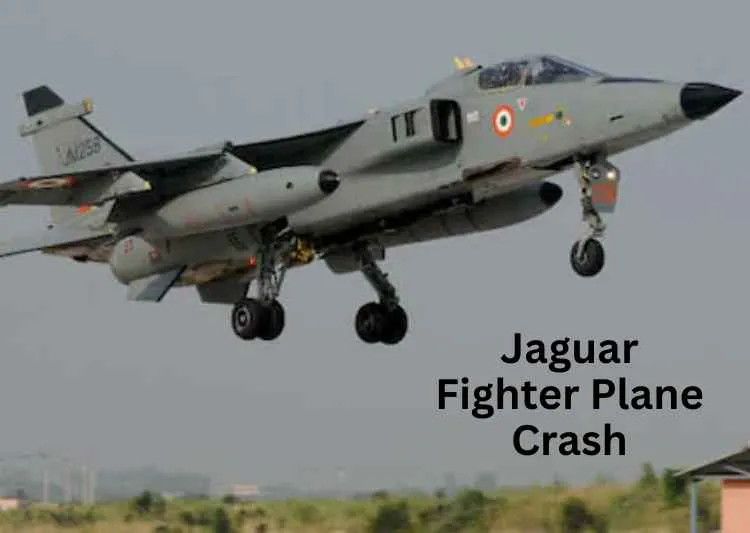Churu. The Jaguar Fighter Plane Crash in Rajasthan’s Churu district has once again raised serious concerns about flight safety within the Indian Air Force. On Monday afternoon, a Jaguar aircraft belonging to the IAF crashed in Bhanu Da village under the Ratangarh area, triggering panic and fear among locals.
Eyewitnesses Recall the Intense Jaguar Fighter Plane Crash
The incident took place around 12:40 PM as the aircraft was flying over the village. According to eyewitness Prem Singh, the Jaguar Fighter Plane Crash resulted in the aircraft breaking into multiple pieces mid-air, causing debris to scatter across nearby fields. The impact sparked fires in the agricultural land, and smoke was visible from a considerable distance.

Villagers stated that body parts were found scattered at the crash site. So far, two bodies have been recovered, although it remains unclear how many personnel were on board the aircraft at the time of the crash. Local police from the Rajladesar station reached the scene quickly and sealed off the area. Authorities have requested the public to maintain a safe distance as an official investigation is underway.
Third Jaguar Fighter Plane Crash in Four Months
This incident marks the third Jaguar Fighter Plane Crash in India within just four months:
March 7, 2025: A Jaguar crashed during a training mission in Panchkula, Haryana. Thankfully, the pilot ejected safely, and no casualties were reported.
April 2, 2025: Another Jaguar went down during a night mission in Jamnagar, Gujarat. One pilot lost his life while the second sustained injuries.
The recurrence of such incidents has sparked a debate around the reliability and continued use of the Jaguar fleet in combat and training operations.
Why is the Jaguar Fighter Jet Still in Use?

The Jaguar fighter aircraft is a deep-strike, ground attack jet developed jointly by Britain and France. India inducted it into the Air Force in 1979, naming it ‘Shamsher’. Capable of carrying nuclear payloads, the aircraft is designed for penetrating enemy territories and destroying strategic targets.
Over the decades, the Jaguar has been a crucial part of India’s aerial arsenal, participating in numerous high-stakes missions, including the Kargil War. India also manufactures the aircraft domestically through Hindustan Aeronautics Limited (HAL).
Equipped with two powerful engines, the Jaguar can fly at Mach 1.6 (1700+ km/h). Its low-altitude flying capability allows it to evade enemy radar, and it can carry bombs, rockets, missiles, and guns, making it a formidable machine on the battlefield.
Should the IAF Reevaluate the Jaguar Fleet?
With back-to-back Jaguar Fighter Plane Crashes, experts are beginning to question whether the Indian Air Force should reevaluate the continued use of the Jaguar fleet. Designed in the 1970s, the aircraft lacks several modern avionics and safety upgrades now standard in newer jets.
While the Jaguar remains respected for its durability and mission capability, its aging design may no longer align with the IAF’s modern combat and safety requirements. Many aviation analysts suggest that upgrading or phasing out the older Jaguars could prevent further tragedies and improve pilot safety.
Public Response and Growing Concerns
Following the Jaguar Fighter Plane Crash, residents of Bhanu Da village have expressed fear and concern about such aircraft flying over populated areas. Many are now demanding that training or test flights be moved away from civilian zones to ensure public safety. Social media is also abuzz with questions about aircraft maintenance and accountability.
FollowNiharika Timesfor all the big news of the Jaisalmer and country and. Like us onFacebookand follow us onX. Always visitNiharika Timesfor latest news.


